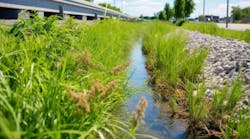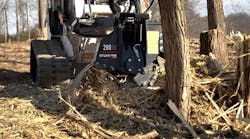How to feed the planet’s growing population in the face of a changing climate and rising sea levels is a serious concern. The global population is projected to reach 8.6 billion in the next 11 years, and 11.2 billion by 2100, according to the UN, and the US is among the countries contributing most to that growth. Effectively and efficiently using arable land will only become more important as populations increase, and essential to that is maintaining the quality and integrity of agricultural soil.
Farmers in Kansas are very aware of how important it is to prevent erosion. Heavy storms earlier this year had serious impacts on local farms, delaying the planting of some crops and washing away others. The storms also washed away a lot of topsoil, The Wichita Eagle reports. Nutrients like nitrogen, phosphorus, and potassium—vital for crop health—mix with organic matter in the topsoil. When the topsoil is washed away, not only are decades of difficult-to-replace organic material gone but without the topsoil acting as a protective barrier, the earth is now prone to even more erosion. “The economic impacts could be lasting for several years easily,” Ron Graber, a watershed specialist, told The Wichita Eagle.
Meanwhile, hazelnut farmers in Oregon are looking to avoid a situation like the one in Kansas. To combat soil erosion, the USDA Natural Resources Conservation Service, the Oregon Department of Agriculture, Oregon State University, and several local Soil and Water Conservation Districts have joined forces to offer financial assistance to encourage planting cover crops between rows of trees, reports Capital Press.
Traditionally, the ground in hazelnut orchards has been left bare, which eliminates competition between plants and makes harvesting easier. But the Pacific Northwest is known for its rainy winters and the bare ground has made hazelnut farms prone to severe erosion, which not only degrades the quality of the soil but can carry sedimentation into streams and other bodies of water. According to the article, the Oregon program will “help farmers plant permanent vegetation or cover crops in between rows, establish field borders, and place mulch in seasonal erosion trouble spots.” Protecting the orchard floor from erosion will have the added benefits of improving the quality of runoff and increasing both the water holding capacity of and organic matter in the soil.
What do you see as possible solutions to prevent or mitigate erosion and soil degradation in agricultural settings? Send your thoughts and comments to [email protected].






